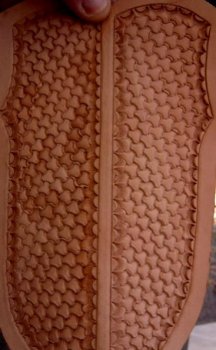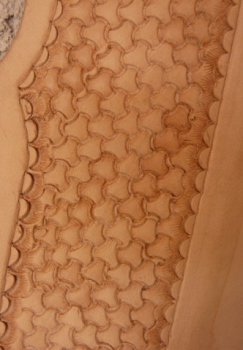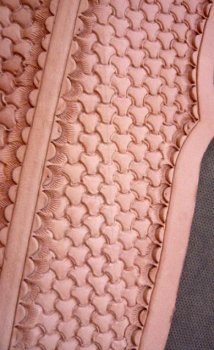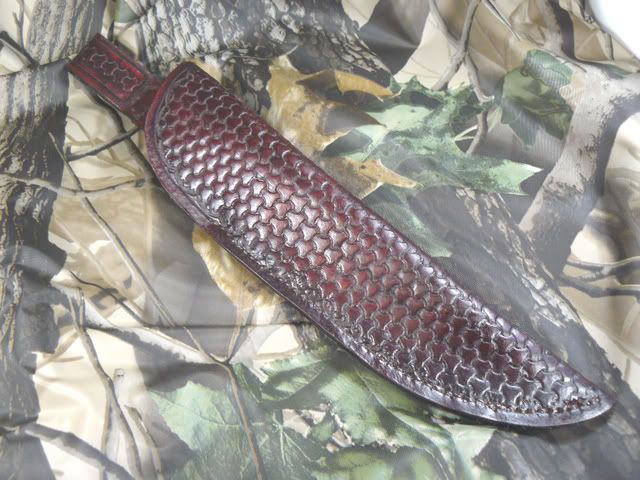I'm having trouble keeping my basketweave stamping aligned properly and I'm not sure what I'm doing wrong. Can anyone help troubleshoot by looking at these photos?
The leather is Wickett & Craig 7/8 oz shoulder, which seems to take the tooling much differently than the Tandy (leather) that I had before. The left side was done first, and it was probably too wet which could be at least part of the problem. I also made the impressions nice and deep, and this gave me problems trying to line up the stamp in the previous mark because of the differences in height between stamped and unstamped areas (if that makes sense.)
The right side was allowed to dry to a more properly 'cased' condition before stamping, and I also first went over it lightly to try to keep everything straight and aligned, but when I went back over it the second time to make the impressions deeper, I had the same problems with overlapping and/or underlapping (is that a word???) impressions.
One more thing is the border camoflage stamp...some of the half circle portions of the stamp have a line or cut in them. Is the stamp perhaps bouncing and causing this to happen?
I'd appreciate and value anyone's suggestions on what I may be doing wrong!
The leather is Wickett & Craig 7/8 oz shoulder, which seems to take the tooling much differently than the Tandy (leather) that I had before. The left side was done first, and it was probably too wet which could be at least part of the problem. I also made the impressions nice and deep, and this gave me problems trying to line up the stamp in the previous mark because of the differences in height between stamped and unstamped areas (if that makes sense.)
The right side was allowed to dry to a more properly 'cased' condition before stamping, and I also first went over it lightly to try to keep everything straight and aligned, but when I went back over it the second time to make the impressions deeper, I had the same problems with overlapping and/or underlapping (is that a word???) impressions.
One more thing is the border camoflage stamp...some of the half circle portions of the stamp have a line or cut in them. Is the stamp perhaps bouncing and causing this to happen?
I'd appreciate and value anyone's suggestions on what I may be doing wrong!
Attachments
Last edited by a moderator:







